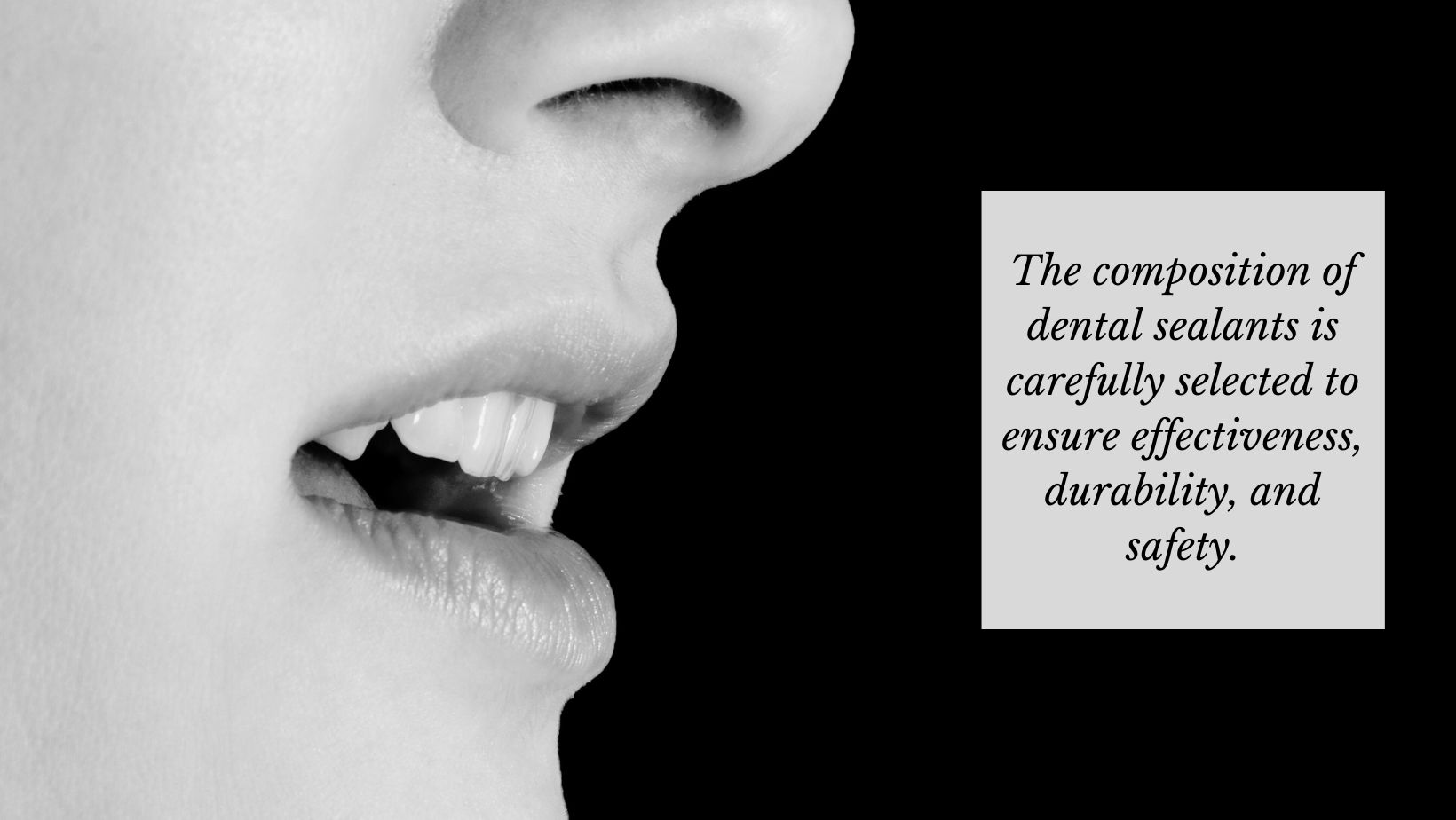Dental sealants are a preventive dental treatment designed to protect teeth from decay and cavities. They are commonly recommended for children and teenagers, but adults can benefit from them as well. One concern that often arises when discussing dental sealants is their composition. Dental sealants are made of safe and reliable materials, none of which are toxic or dangerous.
The Purpose of Dental Sealants
Dental sealants are thin, protective coatings applied to the chewing surfaces of molars and premolars. These back teeth have deep pits and fissures where food particles and bacteria can easily get trapped, making them more susceptible to cavities. Sealants act as a barrier, preventing these vulnerable areas from developing decay.
What are Dental Sealants Made of and Are They Safe?
Dental sealants are made from a composite material, which is safe and well-tolerated by the body. The main components of dental sealants include:
Resin: Resin is typically made of a type of plastic, usually bisphenol-A-glycidyl methacrylate (Bis-GMA) or a similar compound. These materials are chosen for their durability and ability to bond well to the tooth’s surface.
Fillers: To enhance the strength and wear-resistance of sealants, small filler particles like glass or quartz may be added to the resin. These fillers improve the overall performance of the sealant.
Why are Dental Sealants Made of Certain Materials?
Dental sealant materials are chosen for their suitability for protecting teeth from decay. The composition of dental sealants is carefully selected to ensure effectiveness, durability, and safety. Here are the primary reasons dental sealant materials are used:
Adhesion to Tooth Surface
Dental sealants need to adhere securely to the tooth surface to create an effective barrier against bacteria and food particles. Resin is able to bond well with tooth enamel, ensuring a tight seal.
Durability
Sealants are subjected to the rigors of daily chewing and grinding, so they must be durable enough to withstand these forces. The inclusion of filler particles like glass or quartz in the sealant resin enhances its wear resistance and longevity.
Moisture Resistance
The oral environment is moist, which can pose a challenge for materials applied to teeth. Dental sealants are designed to resist moisture, ensuring that they remain intact and effective in preventing decay even in a wet environment.
Ease of Application
Dental sealants need to be applied efficiently and effectively by dental professionals. The materials chosen should be easy to work with and capable of forming a smooth, even layer on the tooth surface.
Polymerization
Dental sealants undergo a polymerization process after application. This process allows the liquid sealant material to harden into a solid protective layer. Initiators, which are chemicals like camphorquinone, are included to initiate and control the polymerization process.
Transparency
Dental sealants are typically tooth-colored or clear to maintain the natural appearance of teeth. This transparency ensures that the sealant is discrete and does not alter the aesthetics of the treated teeth.
The selection of materials and the formulation of sealants are based on a combination of scientific research, clinical experience, and safety considerations to ensure sealants are non toxic and effective.

Are Dental Sealants Toxic?
Dental sealants have been used in dentistry for decades. Their safety profile has been extensively studied. The materials used in dental sealants are selected to be biocompatible, meaning they do not cause harm or adverse reactions when in contact with oral tissues. This minimizes the risk of allergies or sensitivities.
Bisphenol-A (BPA) Concerns
BPA is a chemical that is used in the production of some (not all) dental sealants. According to the American Dental Association, dental sealants can result in a small increase in BPA detected in children’s saliva and urine. BPA detection resolves within 24-48 hours after dental sealant placement, but it is dependent on the number of teeth treated (if it is a high number the likelihood of BPA detection is greater).
The main source of BPA is believed to be the outer layer of sealants, so having patients rinse well may help reduce potentially loose BPA from seeping into the mouth following sealant placement. However, many modern sealants are BPA-free, and alternatives with a lower risk of BPA exposure are available.
BPA-Free Options
In response to concerns about the potential health effects of bisphenol-A (BPA), many dental sealants are now formulated to be BPA-free. This addresses worries related to BPA exposure, even though the risk from dental sealants has been deemed minimal by regulatory authorities.
Minimal Risk of Exposure
Even when dental sealants contain BPA, the exposure is minimal and localized. The ADA and the U.S. Food and Drug Administration (FDA) maintain that the levels of BPA exposure from dental sealants are far below levels considered to be harmful.
Benefits Outweigh Potential Risks
The preventive benefits of dental sealants in reducing the risk of cavities far outweigh any potential risks associated with their use. Untreated dental decay can lead to more significant health issues and costly dental treatments.
Dental sealants are a valuable tool in preventing cavities, especially in children and teenagers. While concerns have been raised about the potential toxicity of sealants, they are generally considered safe for use. Modern dental sealants are often formulated to be BPA-free, addressing one of the main concerns associated with their use. If you have concerns about dental sealants, it’s best to call or make an appointment with us. Ultimately, the goal of dental sealants is to protect your teeth and promote good oral health, and their benefits in preventing cavities should not be overlooked.


